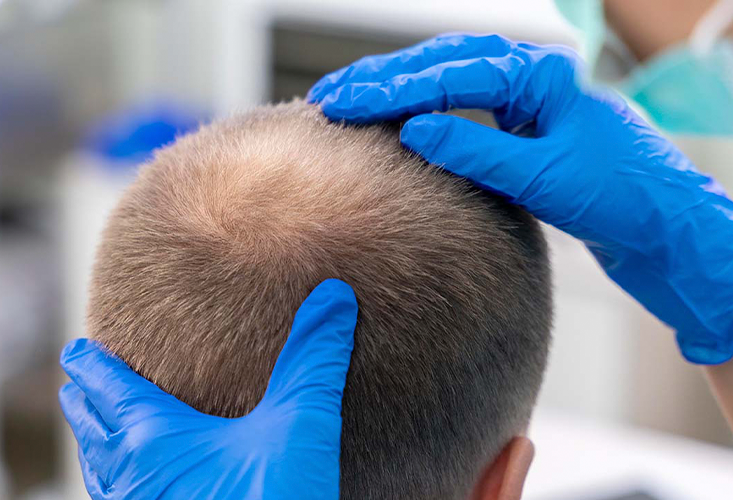Will Transplants to the Crown Area be Successful?
Hair transplantation follows a natural growth process, and follicles do not start growing immediately after the operation. On the contrary, this intervention initiates a development process that takes approximately a year. However, even just three months after the surgery, it is possible to gather significant information about the transplant results and the overall follicular growth situation. A washing process lasting for 9 days is applied immediately after the hair transplantation operation, followed by a scab shedding process on the 10th day. Once the scab shedding is complete, the hair takes on a short-cut appearance. In the first month, the hair continues its active growth process. In the second and third months, the hair enters a resting phase during which the follicles strengthen. By the fourth month, the hair goes through another growth phase, becoming denser and acquiring a more natural appearance by the 12th to 13th months. In general terms, after 3 months of a hair transplant, it is already possible to notice the first fully developed hair. However, the growth period can vary from patient to patient, with three months being sufficient in most cases. It's important to note that these initial hairs are not the final ones; they are fragile and will acquire thickness and consistency over time. During this period, there may be an appearance of acne in the recipient areas, which is a typical symptom of the third month. This occurs because, during the final stages of follicle growth, pimples similar to those on the face may appear. However, they typically disappear within a few days, and it's crucial not to touch them. The third month is also of fundamental importance as the doctor should evaluate the progress of the new hair growth and determine if depopulated areas are unable to develop healthy hair on their own. As mentioned earlier, each individual is unique, and the speed of growth can vary considerably. A graft usually leads to certain outcomes that require following a set of suggestions similar to those given after a transplant. These suggestions include avoiding smoking and alcohol, gently combing your hair, and avoiding cuts or specific hairstyles during the first few weeks. The assistant in charge will guide you on the right steps to take. After the third month, the number of suggestions and prescriptions usually decreases until they are no longer needed. At this point, you can go back to your regular life, as if the transplant never happened. However, it's up to the specialist doctor to decide if it's necessary to continue following suggestions beyond the third month to protect the newly grown hair. During hair transplantation, it’s important to know that the areas where hair is transplanted are divided into three primary sections: After implantation, the growth speed and success rate of transplanted hair vary depending on the area due to differences in blood circulation. The frontal and middle regions benefit from better blood flow, achieving about 90% success rate with growth generally completing in 7–11 months. Conversely, the crown area has relatively weaker blood circulation, resulting in a reduced success rate of about 50–60%. Hair growth in this area may take up to 15 months. When the transplanted area is wide, experts recommend placing more grafts in the frontal region to maximize visible results. This strategy, however, is less effective in the crown area due to lower blood circulation and less fat tissue to nourish the grafts. Even with supportive treatments such as vitamins and medical care, 50–60% success is typical. For example, in a case where 1000 grafts are transplanted to the crown, around 600 grafts are expected to successfully grow. Hair in the crown area grows more slowly than in the front. While frontal grafts reach full growth in about 7–11 months, the crown area may take up to 1 year and 3 months. This difference is due to anatomical structure and blood flow dynamics. Everyone undergoing a transplant will experience these patterns to some degree. So, if you're asking, "Will my hair grow in the crown area after a transplant?" — the answer is yes, but growth rates and timing will vary per person.What to Expect After a Hair Transplant
What Should I Anticipate Three Months After a Hair Transplant?
Precautions to Take During the First 3 Months After Transplantation
Hair Transplant Growth in Different Areas
Zones of Hair Transplantation
Hair Transplant and Crown Area: Factors Affecting Success Rates
Growth Timeline: Crown Area vs Frontal Region




